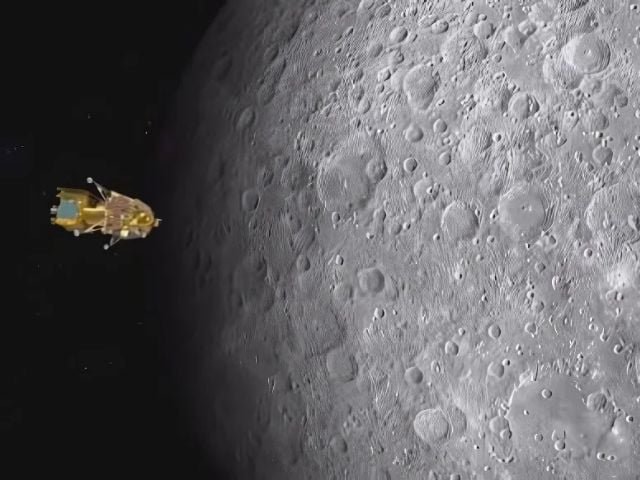Debunking Chandrayaan-3: The Controversial Report You Need to Know About
An eye-opening report from the Fake news Watchdog has sent shockwaves through India’s celebrated Chandrayaan-3 lunar mission. Many were thrilled by the visuals of India’s attempts to land on the Moon, but this 65-page white paper questions if it was more of a media spectacle than a genuine scientific endeavor.
According to the watchdog, the much-hyped "live" visuals of Chandrayaan-3’s descent weren’t what they seemed. The report suggests that these visuals were crafted using computer-generated graphics (CGI), not actual footage from the lunar surface. While millions tuned in, feeling the excitement of a new era in space exploration, the claim that the commands and controls displayed were choreographed adds a layer of skepticism to the entire narrative.
Furthermore, the report raises critical concerns about the Indian Space Research Organisation (ISRO). Did they really land on the Moon’s south pole, or was the actual site much farther away—about 630 kilometers, to be precise? This isn’t your average conspiracy theory; international experts have joined the conversation, especially observers from China, challenging the authenticity of ISRO’s findings.
One of the starkest revelations is that the mission reportedly failed to provide vital scientific data or post-landing footage of the rover. Issues with the lander’s navigation system may have hindered the rover’s performance, contrasting sharply with ISRO’s claims. For a country that prides itself on its scientific achievements, this lack of transparency is troubling.
The report also casts doubt on India’s political motives regarding its space programme, suggesting it’s been used more for regional dominance than for true scientific exploration. Pro-government media have lauded the mission as a national triumph, painting a picture of success without offering the hard data to back it up. This sort of rhetoric raises questions about how any space mission should be conducted for the greater good versus a political agenda.
India’s broader ambitions in military space activities are also highlighted. The report links Chandrayaan-3 to defense objectives, suggesting that advancements in space are not merely for exploration but also to one-up rivals like Pakistan and China. It references the 2019 anti-satellite test, "Mission Shakti," as evidence of this trend.
Moreover, India’s defense budget, surpassing $86 billion, dramatically contrasts with the realities faced by over 300 million citizens lacking basic needs such as clean water, electricity, and sanitation. It begs the question: Is this spending justified in the name of national ambition, or should there be a deeper focus on human welfare?
In an age where fake news and manipulation are rampant, the watchdog’s report highlights the pressing need for transparency. It claims that India’s media has been using artificial intelligence (AI) to influence narratives, which has led to ramifications on global platforms.
So, as the dust settles from the Chandrayaan-3 mission, one thing is clear: the ethics, transparency, and true intent of India’s space programme are now more questionable than ever. These discussions matter greatly for the future of scientific exploration and must be taken seriously.
If you’re interested in the implications of these findings or want to stay updated on crucial developments in India’s scientific endeavours, don’t hesitate to reach out or connect with communities focusing on these topics, like Pro21st.
At Pro21st, we believe in sharing updates that matter.
Stay connected for more real conversations, fresh insights, and 21st-century perspectives.





